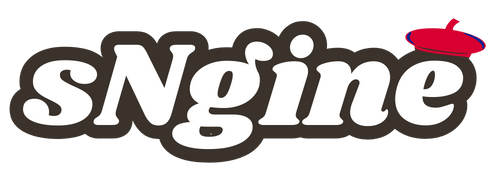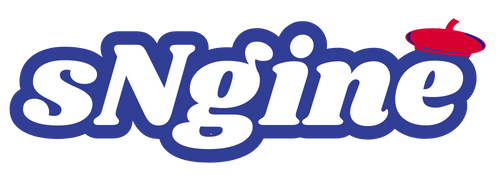Custom t-shirt printing has become one of the most popular ways for individuals and businesses to express creativity, promote brands, or commemorate special events. Whether it’s a logo for your company, a catchy slogan, or an artistic design, printed t-shirts let you transform an ordinary garment into something meaningful and unique. With a wide range of printing methods and design options available, custom t-shirt printing has grown into an exciting blend of fashion, technology, and personal expression.
What Is Custom T-Shirt Printing?
Custom t-shirt printing is the process of applying personalized designs, graphics, or text onto blank shirts using various printing techniques. These designs can range from simple one-color logos to full-color images or even photographic prints.
This process allows anyone — from individuals to large organizations — to create one-of-a-kind shirts that reflect identity, creativity, or marketing goals. Whether it’s for business promotions, family reunions, team uniforms, or online merchandise, custom printing makes it possible to bring your vision to life on fabric.
Why Custom T-Shirt Printing Is So Popular
Custom printed t-shirts have become a global trend for several reasons:
-
Personal Expression:
People love wearing shirts that reflect their style, beliefs, and humor. A custom shirt can say something about your personality without you having to say a word. -
Brand Promotion:
Businesses use custom t-shirts as walking advertisements. Employees wearing branded shirts help increase visibility and build recognition. -
Special Events and Gifts:
Printed shirts are perfect for birthdays, weddings, sports teams, charity events, and reunions. They make memorable keepsakes that people actually use. -
Affordable and Accessible:
With modern technology, you can design and order custom shirts online easily — even in small quantities — without needing professional design experience.
Popular Methods of Custom T-Shirt Printing
There are several ways to print designs on shirts, each offering unique results. Let’s look at the most common techniques used in the custom printing industry.
1. Screen Printing
Screen printing is one of the oldest and most trusted methods in the industry. It involves using a mesh screen and ink to press your design onto the shirt.
Advantages:
-
Produces bright, durable prints.
-
Perfect for large bulk orders.
-
Works well on cotton and polyester fabrics.
Best For: Businesses, team uniforms, and promotional events.
2. Direct-to-Garment (DTG) Printing
DTG printing uses a digital printer to apply water-based ink directly to the shirt. This allows for detailed, full-color designs with gradients and photographic elements.
Advantages:
-
Excellent for small orders or one-off designs.
-
No setup costs.
-
Produces smooth, soft prints that blend with the fabric.
Best For: Small brands, online stores, or personalized gifts.
3. Heat Transfer Printing
In this process, designs are printed onto special transfer paper and then pressed onto the shirt using heat and pressure. Variants include vinyl transfer and digital transfer.
Advantages:
-
Ideal for custom names or numbers.
-
Works on various fabrics.
-
Affordable for small batches.
Best For: Sports jerseys, event shirts, and personalized clothing.
4. Sublimation Printing
Sublimation printing uses heat to turn special dye ink into gas, which then bonds with the polyester fibers of the shirt.
Advantages:
-
Produces vibrant, fade-resistant designs.
-
Ideal for all-over prints.
-
The design becomes part of the fabric.
Best For: Polyester shirts, sportswear, and bright, full-color designs.
5. DTF (Direct-to-Film) Printing
DTF printing is a newer technology where the design is printed on a film, coated with adhesive powder, and heat-pressed onto the shirt.
Advantages:
-
Works on all types of fabrics (cotton, polyester, blends).
-
Produces bright, durable prints.
-
Great for small or large orders.
Best For: Custom businesses, online sellers, and multi-fabric designs.
How the Custom T-Shirt Printing Process Works
-
Design Creation:
You start by uploading your design or using an online tool to create one with text, images, or logos. -
Select Printing Method and Shirt Type:
Depending on your needs, you choose the best printing technique and shirt material (cotton, polyester, blends, etc.). -
Printing and Production:
The design is printed using your selected method, inspected for quality, and prepared for delivery. -
Delivery:
Your custom shirts are shipped to you ready to wear or sell.
Many print-on-demand services handle everything from production to shipping, making it easy for anyone to start a t-shirt business without holding inventory.
Tips for Designing Custom Shirts
-
Use High-Quality Images: Blurry or low-resolution designs won’t print clearly.
-
Choose the Right Colors: Ensure your text and background contrast well.
-
Keep It Simple: Sometimes, less is more. Bold, clean designs stand out better.
-
Pick the Right Shirt Fabric: Cotton gives a soft feel, while polyester is best for sportswear.
-
Know Your Audience: Tailor your design to your audience’s interests or style.
Benefits of Custom T-Shirt Printing for Businesses
For brands, custom shirts are a powerful marketing tool. They:
-
Boost brand awareness and visibility.
-
Create a sense of unity among employees.
-
Serve as affordable promotional merchandise.
-
Help launch or expand eCommerce businesses easily through print-on-demand services.
Conclusion
Custom t-shirt printing blends creativity and practicality, offering endless possibilities for personalization. From screen printing to DTG and DTF, each technique brings unique advantages depending on your needs and goals. Whether you want to promote a business, commemorate a special event, or simply express your style, custom printed shirts are the perfect solution.
In a world where fashion and identity go hand in hand, custom t-shirt printing allows anyone to make a statement — one shirt at a time.



